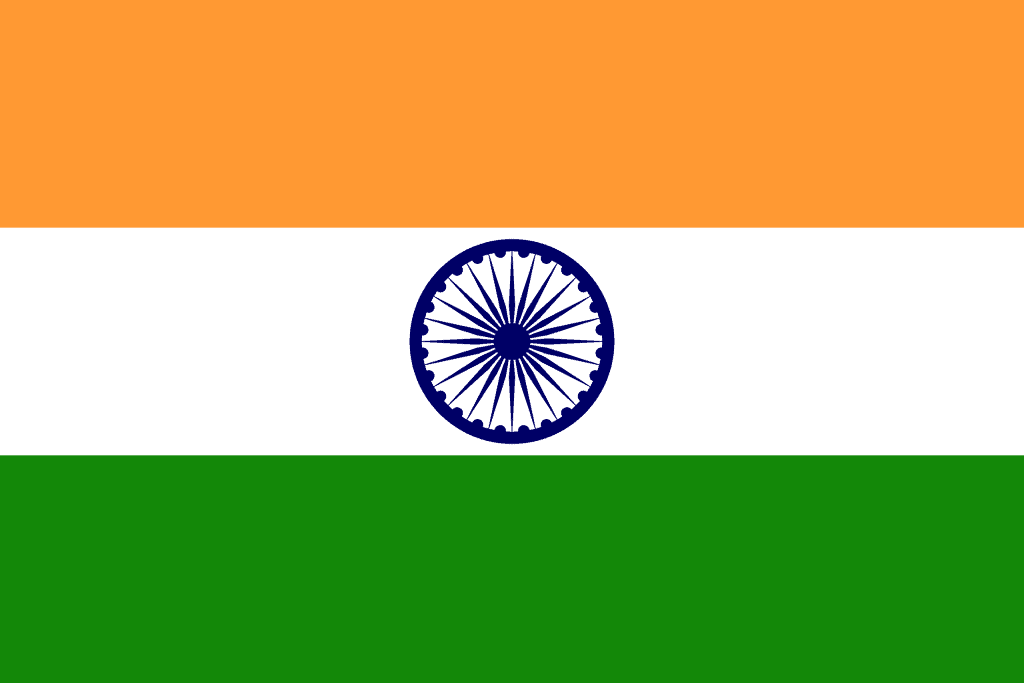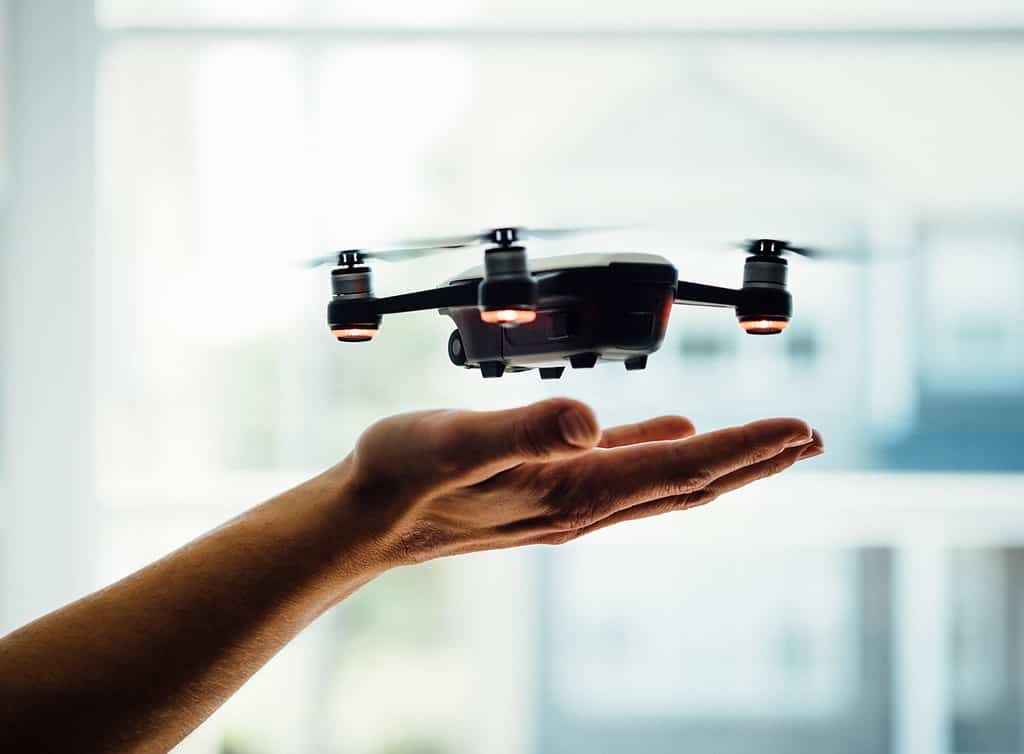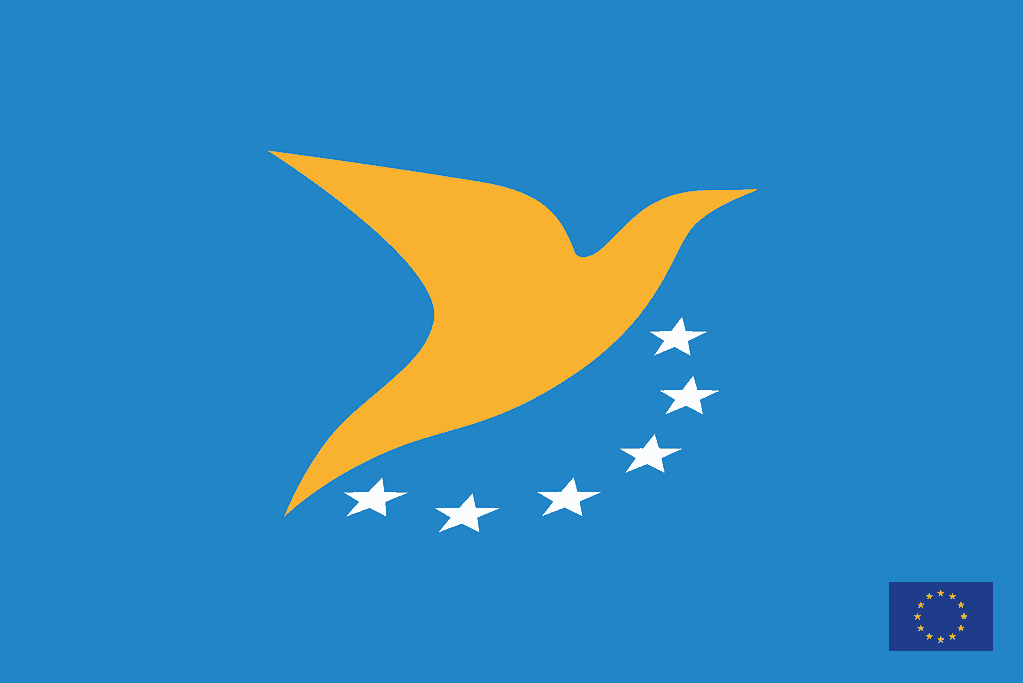Summary of Drone Laws in the Republic of India
Hobbyist Drone Laws For Residents of India
Drone Operations in India are currently regulated.
- Hobbyist drone flights are allowed in India
- Hobbyist drone pilot license (India Remote Pilot Certificate) is required except for drones up to 2kg for non-commercial use only
- Hobbyist Drone registration is required in India for hobbyists
- Drone Remote ID is not required in India for hobbyists
- Drone Insurance is required, except nano drones, for hobbyists’ drone operations in India
Read below for more details on Hobbyist Drone Laws in India and to find links to regulators and other credible sources!
Commercial Drone Laws For Residents of India
Drone Operations in India are currently regulated.
- Commercial drone flights are allowed in India
- Commercial India drone pilot license is required
- Commercial Drone registration is required in India for commercial drone operators
- Drone Remote ID is not required in India for Commercial Drone Operators
- Drone Insurance is required for commercial drone operations in India
Read below for more details on Commercial Drone Laws India and to find links to regulators and other credible sources!
Drone Laws For Visitors To India
Drone Operations in India are currently regulated.
- Foreign visitor drone flights are not allowed in India
- Foreign visitor drone pilot license is not applicable
- Drone registration is not applicable in India for visitors/tourists
- Drone Remote ID is not applicable in India for tourists
- Drone Insurance is not applicable for tourist drone operations in India
Read below for more details on Drone Laws in India for Visitors (Tourists) and to find links to regulators and other credible sources!
Drone Laws For Government Drone Operators in India
Drone Operations in India are currently regulated.
- Government drone flights are allowed in India
- Government drone license India is required
- Drone registration is required in India for Government operations
- Drone Remote ID is not required in India for Government operations
- Drone Insurance is not required for Government drone operations in India
Read below for more details on Drone Laws India for Government Drone Operations and to find links to regulators and other credible sources!
Agencies Responsible for regulating drones in the Republic of India
Drone Regulator in India: Directorate General of Civil Aviation (DGCA) Site for RPAS
Drone Registration and Clearance in India: India’s Digitalsky Website for drone registration and clearance
Links to Drone Regulations in India: India Drone Regulations and August 2021 Updated Gazette of Regulations
Please note that DGCA has provided new drone rules in India. Please check the site for updates.
Contact Information
If you need additional details we have not covered or specific case help, contact the Danish Civil Aviation and Railway Authority at:
- Address: Aurobindo Marg, Opp. Safdarjung Airport, New Delhi 110 003, India
- Phone: +91-011-24622495
- Email: drone.dgca@gov.in
- Email for UAS certification: csrpas@qcin.org
- Email for DigiSky: support-digisky@gov.in
Please continue reading for more details on Denmark Drone Laws.
Drone rules in India – General rules for flying drones in India
DGCA is the Indian agency responsible for drone safety. DGCA provides many internet-accessible details on flying for fun or work. The highlights are below. For more details, click on the link above.
Are drones allowed in India?
According to DGCA, drones are allowed in India. Read on for more details on drone flying rules in India.
Here are the most important rules to know for flying a drone in India:
The laws are quite detailed and explicit, and you should review them before flying a drone in India.
Foreign Drones / Drone India / Drone Policy India
IMPORTANT NOTE: The Indian Government has banned the import of foreign drones with rare exceptions allowed for research, and government use.
Drone Categories in India
Unmanned aircraft systems (UAS) in India fall into three categories, namely:––
- airplane;
- rotorcraft; and
- hybrid unmanned aircraft system.
They are further broken into sub-categories as follows:––
- remotely piloted aircraft system (RPAS);
- model remotely piloted aircraft system (MRPAS); and
- autonomous unmanned aircraft system (AUAS).
UAS are also grouped into classifications. Callisifcations are based on the maximum all-up weight, including payload. The classifications are as follows:
- Nano unmanned aircraft system. These weigh less than or equal to 250 grams. You do not require permits to fly a nano except in controlled airspace. You must ensure that you do not fly any nano drone beyond 50 ft (15m) Above Ground Level (AGL).
- Micro unmanned aircraft system. These drones weigh over 250 grams but less than or equal to 2 kilograms. No permits are required for recreational use. Commercial usage and flights in controlled airspace require
- Small unmanned aircraft system. These SUAS weigh more than 2 kilograms but less than or equal to 25 kilograms;
- Medium unmanned aircraft system. The MUAS weigh more than 25 kilograms but less than or equal to 150 kilograms, and
- Large unmanned aircraft system weighing more than 150 kilograms.
Registration is required for all but the Nano category.
Drone Registration in India
General.––
- First, register your drone on the digital sky platform. Get a unique identification number unless exempted. Do not operate a drone without doing this first.
- The Director-General keeps a record of all registered unmanned aircraft systems. And that record includes the unique identification number issued.
- The drone operator must ensure that the drone has a valid type certificate.
Application and procedure for drone registration India:
- Make an application in Form D-2 on the digital sky platform along with the fee specified in rule 46. Provide requisite details. Include the unique number of the type certificate of the unmanned aircraft system.
- The digital sky platform will verify the details. They will issue a unique identification number to the applicant.
- The unique identification number of a UAS is linked to its unique serial number. It is also linked to the unique serial numbers of its flight control module and remote pilot station.
- If you change the flight control module or remote pilot station, you must update digital sky. You have to update the unique serial number of the new flight control module or remote pilot station. You have seven days after you have replaced these items. Or, you must do so before you fly the unmanned aircraft system, if earlier.
Remote Pilot Certificate in India (previously Remote Pilot License or Drone License India)
General.
You can fly drones up to 2kg for non-commercial drone use without a pilot certificate. All other drone uses require a Remote Pilot Certificate (RPC). The RPC must be valid and enlisted on Digital Sky.
Classification
The RPC identifies the category, sub-category, and classification of the unmanned aircraft system. It will identify combinations of these if applicable.
Eligibility
An individual will be eligible to get a remote pilot certificate if they––
- are not less than eighteen years of age and not more than sixty-five years of age;
- have passed the class tenth examination. Or its equivalent from a recognized Board; and
- Have completed training from any authorized remote pilot training organization.
Procedure for obtaining a remote pilot certificate
- Complete the training for your desired category, sub-category, or class.
- Pass the tests conducted by the authorized remote pilot training organization.
- Within seven days of successful completion, the training organization will apply for your RPC. They will fill in Form D-4 on the Digital Sky platform. Pay the fee as specified in rule 46.
- You will be issued a remote pilot certificate through the digital sky platform.
- Your remote pilot certificate is issued within fifteen days.
Note: you are not required to get a certificate from DGCA separately after training from a DGCA-approved drone training institute. After passing the course, you will get a ‘Remote Pilot Certificate’ from the DGCA-approved drone training institute, making you eligible to fly micro drones for commercial purposes.
Validity of Certificate
A remote pilot certificate will––
- be valid only if it is enlisted on the digital sky platform;
- unless suspended or canceled, remain valid for a period of ten years;
- be renewed for a maximum period of ten years, on payment of fee as specified in rule 46:
You must take refresher courses as may be specified on the digital sky platform from time to time.
Exemption from obtaining a certificate
No remote pilot certificate will be required for
- operating a nano unmanned aircraft system and
- A micro unmanned aircraft system for non-commercial purposes.
Insurance Requirements
The rules and laws in the Motor Vehicles Act from 1988 apply to UAS. The insurance rules for paying for car accident damages also apply to drones. If a drone crashes and hurts someone or damages property, insurance will help pay for it. The rules apply in the same way they do for regular motor vehicles.
Nano unmanned aircraft systems may operate without third-party insurance.
You can operate an unmanned aircraft system with special insurance for those operations. The Insurance Regulatory and Development Authority of India must approve the insurance product.
Foreign Operators
Foreigners are currently not allowed to fly RPAs in India. For commercial purposes, you need to lease RPAS to an Indian entity. The Indian entity will obtain a Unique Identification Number (UIN) and UAOP from DGCA.
What are the requirements for the import of RPAs (with or without a camera) in India?
- To import an RPAS to India, you must get Equipment Type Approval (ETA). This is obtained from WPC Wing, Department of Telecommunication. It allows for operating in a de-licensed frequency band(s). Such approval will be valid for a particular make and model.
- You must apply to DGCA along with ETA for import clearance. Based on the import clearance issued by DGCA, DGFT will issue a license to import RPAS. This does not apply to the Nano category,
- Import of foreign drones is now effectively banned.
Notes for recreational drone pilots flying for fun in India
Drone rules India – Do’s:
- Ensure your Drone (except Nano in uncontrolled airspace up to 50ft) is Digital Sky “No Permission- No Takeoff” (NPNT) Compliant
- Obtain a Unique Identification Number (UIN) from DGCA for operating in controlled airspace and affix it to your drone
- Obtain an Unmanned Aircraft Operator Permit (UAOP), if applicable, from DGCA for commercial operations and keep it handy
- Obtain Permission before each flight through the Digital Sky Platform
- Ensure the drone is in good condition (not damaged) and fit for flying safely.
- Keep an eye on interference: Interference can be from mobile devices or blockage of signals, do watch out when flying your drone.
- Fly only during daylight (after sunrise to before sunset)Fly in good weather: Good weather lets you not only fly your drone better but also keep track of it in the air.
- Fly in visual line of sight (VLOS): Always be within the visual range of your drone.
- Follow Flying Guidelines
- Do your homework before spending considerable money on a drone. Make sure you clearly understand all operational and regulatory aspects.
- Be aware of Airspace Restrictions/ No Drone Zones
- Do stay away from airports and heliports
- Respect the privacy of people
- Keep local police informed about your drone flying activity. If you are ever approached by police, provide all requisite information.
- Do log your flights and inform concerned authorities (like DGCA, local police, etc.) of any incidents/ accidents
Drone rules India – Don’ts:
- Don’t fly a Nano drone above 50ft (15m) from the ground level
- Don’t fly a Micro drone above 200ft (60m) from the ground level
- Don’t fly drones more than 400ft (120m) from the ground level
- Don’t fly a drone near other aircraft (manned or unmanned)
- Don’t fly a drone near airports and heliports
- Don’t fly a drone over groups of people, public events, or stadiums full of people without permission
- Don’t fly the drone over government facilities/military bases or over/ near any no-drone zones.
- Don’t fly a drone over private property unless permission is given.
- Don’t fly a drone in controlled airspace near airports without filing a flight plan orAAI/ADC permission (at least 24 hours before actual operation).
- Don’t drop or carry hazardous material
- Don’t fly a drone under the influence of drugs or alcohol
- Don’t fly the drone from a moving vehicle, ship, or aircraft
Notes for operating Commercial Drone Services in India
See notes for hobbyists above.
In general, receiving commercial clearance to fly an RPAS in India is quite complex, requiring applications and interactions with multiple agencies (see below).
No. | Stakeholder | Responsibility |
| 1 | Directorate General of Civil Aviation | Import clearance Issuance of UIN Issuance & Renewal of UAOP Suspension / Cancellation of UIN & UAOP in case of violations of regulations. |
| 2 | Directorate General of Foreign Trade | Import license |
| 3 | Ministry of Home Affairs | Security clearance |
| 4 | Ministry of Defence | Permission for aerial survey/imageries/ videography/ still photography over the restricted/prohibited areas on a case-to-case basis |
| 5 | Indian Air Force | Air Defence Clearance Monitoring of RPA movements in the country |
| 6 | Wireless Planning and Coordination Wing, DoT | Equipment Type Approval (ETA) or License for RPA |
| 7 | Bureau of Civil Aviation Security | Approval of the Security Programme |
| 8 | Airport Authority of India | Flight Plan Approval Monitoring of RPA movements in the country |
| 9 | Local Police Office | Enforcement of violators as per applicable IPCs |
Important Note on Bringing Drones to India
We have received many questions on whether you can bring a drone to India:
- can i carry drone from usa to india?
- can we bring drone from dubai to india?
- can i bring drone to india?
- can we bring drone from usa to india?
- can i bring dji drone in india from us?
- can we carry drone in international flights india?
You cannot bring a foreign drone to India. India has banned import of foreign drones, including DJI (except for rare circumstances).
FAQs
Can we carry drone in international flights India?
Technically you can carry drones on international flights. See our guide for traveling with a drone. However our interpretation of your question is whether you can purchase a drone internationally and bring it to India. The answer to that is no. India has banned foreign drones.
Can I bring DJI drone in India from US? Can we bring drone from USA to India?
You cannot bring a DJI Drone from the USA to India. India has banned foreign drones, including DJI.
Can I bring drone from Dubai to India? Can we bring drone from Dubai to India?
You cannot bring a drone from the Dubai to India. We assume you are considering buying a drone in Dubai and taking it to India. India has banned foreign drones, so you will not be allowed to bring it into India.
Useful published information on flying drones in India
Here is a video in Hindi (Indian language) on the 2022 India Drone Regulations…
Here is a video on what you can expect to see when flying a drone in India
Authoritative Sources of Information on India Drone Laws
We will attempt to keep an updated list of online authoritative links to regulators and other official websites here:
- Drone Regulator Website: Directorate General of Civil Aviation (DGCA) Site for RPAS
- Link To SUAS Laws: India Drone Regulations and August 2021 Updated Gazette of Regulations and 2022 Amendments
- No Fly Zone Maps/Locations: Digitalsky Map Page
- UAV Registration Site: India’s Digitalsky Website for drone registration and clearance
- Drone Operator Licensing Site: India’s Digitalsky Website
NOTE: This page is about the Regulation of Unmanned Aerial Vehicles: Small Unmanned Aerial Systems (SUAS), Small UAS, Remote Piloted Aerial Systems (RPAS), unmanned aerial vehicle (UAV), Unmanned Aerial System (UAS), and drone are interchangeable terms unless specified. Model Aircraft, toy, remote-controlled, and RC aircraft may be covered by the same regulations unless specified.
Find out why
We think you must use a Drone Preflight Checklist
And a Drone Post-flight checklist
Free Drone Flight Checklist PDF
This Drone Flight Checklist is better than others.
It’s free!
It includes both the preflight checklist and post-flight checklist
It’s an easy-to-use printable PDF that covers all your bases.
Traveling with a Drone?
Click here to read our Comprehensive Guide For Traveling With A Drone.
NOW IT’S YOUR TURN




Leave a Comment